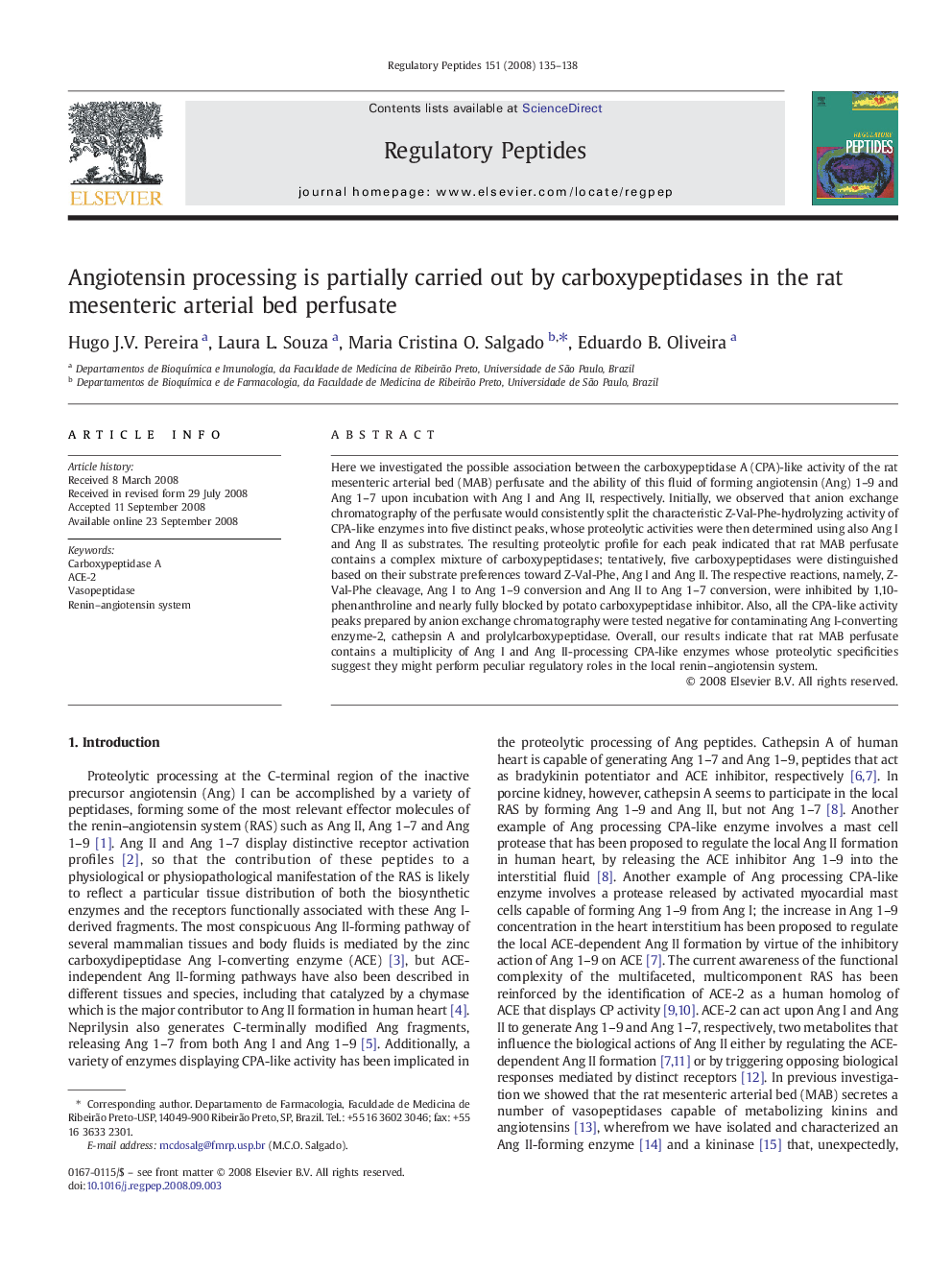| Article ID | Journal | Published Year | Pages | File Type |
|---|---|---|---|---|
| 2023033 | Regulatory Peptides | 2008 | 4 Pages |
Here we investigated the possible association between the carboxypeptidase A (CPA)-like activity of the rat mesenteric arterial bed (MAB) perfusate and the ability of this fluid of forming angiotensin (Ang) 1–9 and Ang 1–7 upon incubation with Ang I and Ang II, respectively. Initially, we observed that anion exchange chromatography of the perfusate would consistently split the characteristic Z-Val-Phe-hydrolyzing activity of CPA-like enzymes into five distinct peaks, whose proteolytic activities were then determined using also Ang I and Ang II as substrates. The resulting proteolytic profile for each peak indicated that rat MAB perfusate contains a complex mixture of carboxypeptidases; tentatively, five carboxypeptidases were distinguished based on their substrate preferences toward Z-Val-Phe, Ang I and Ang II. The respective reactions, namely, Z-Val-Phe cleavage, Ang I to Ang 1–9 conversion and Ang II to Ang 1–7 conversion, were inhibited by 1,10-phenanthroline and nearly fully blocked by potato carboxypeptidase inhibitor. Also, all the CPA-like activity peaks prepared by anion exchange chromatography were tested negative for contaminating Ang I-converting enzyme-2, cathepsin A and prolylcarboxypeptidase. Overall, our results indicate that rat MAB perfusate contains a multiplicity of Ang I and Ang II-processing CPA-like enzymes whose proteolytic specificities suggest they might perform peculiar regulatory roles in the local renin–angiotensin system.
